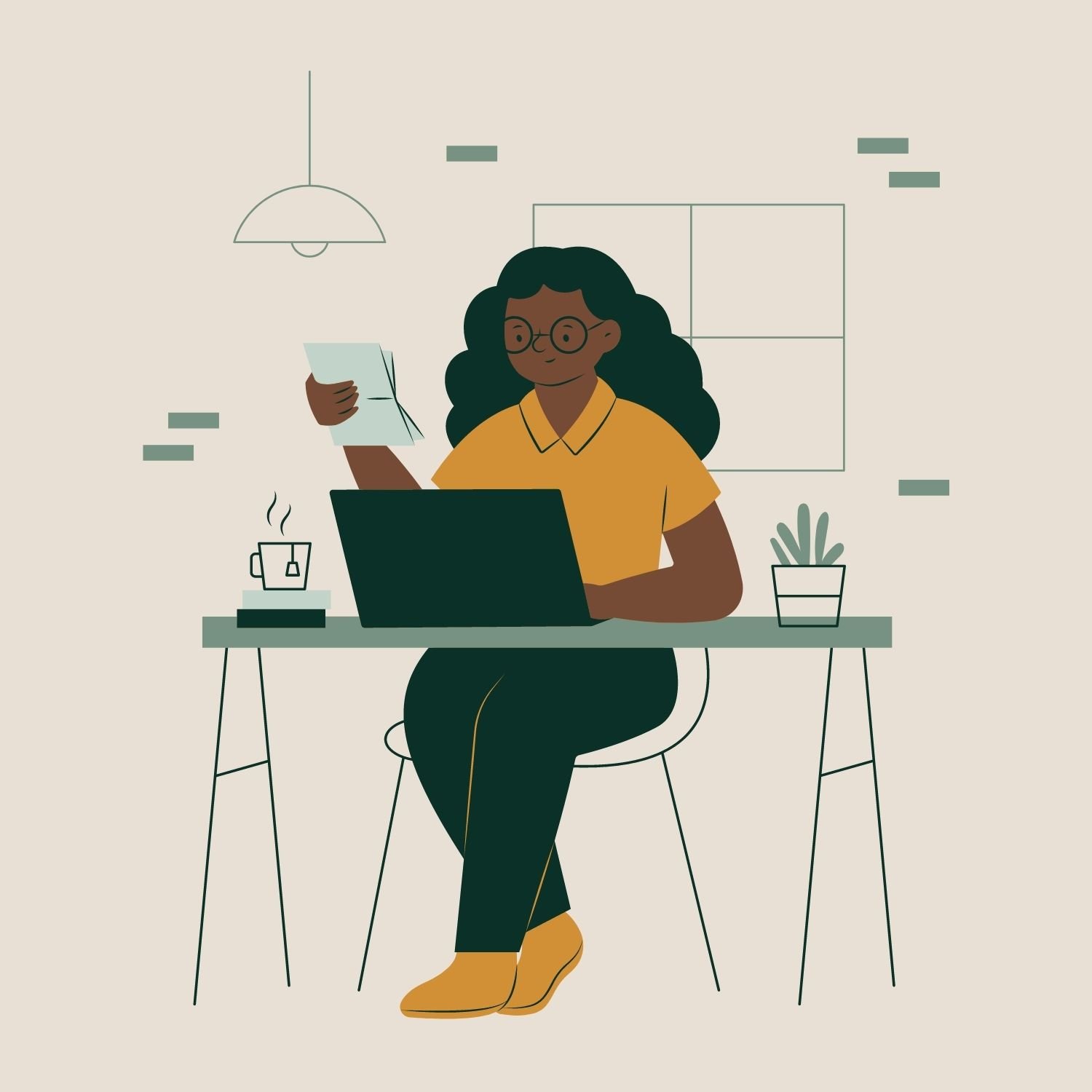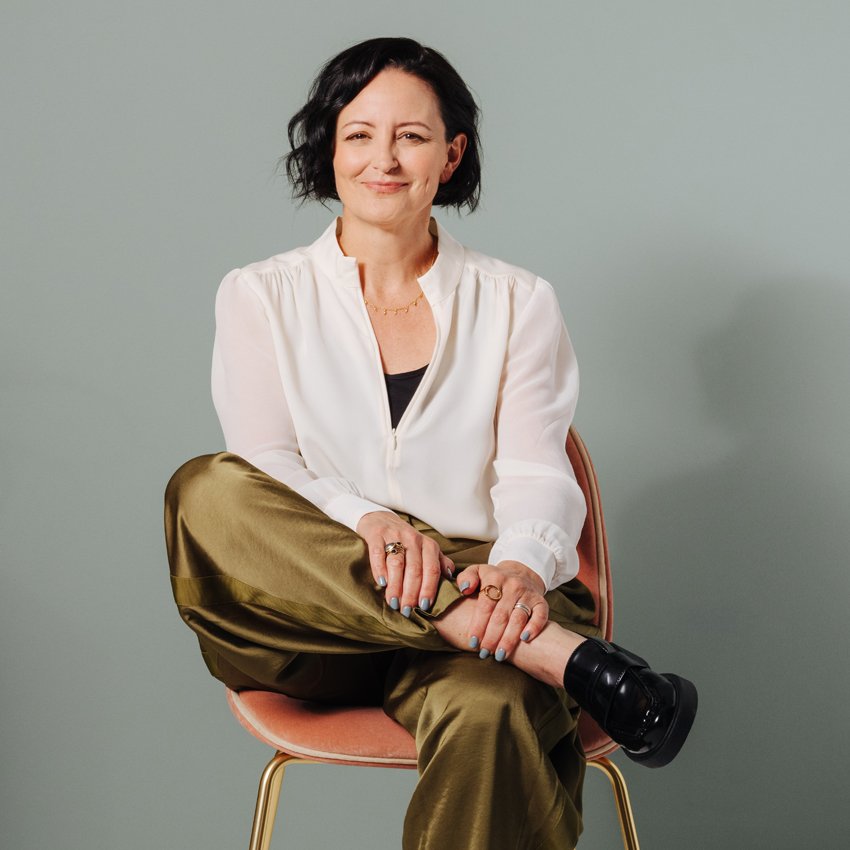Does Today’s Workplace Reflect the Wellbeing Needs of Women?
As a female founder of a company composed mostly of women, I am incredibly proud of the strong bond and supportive culture that we have - trust, care and understanding runs through our studio and outwards towards our clients and others. We have offered flexibility and hybrid working from Day 1, recognising that this was a key enabler for women to perform well at work whilst managing family lives and other external responsibilities.
This International Women's Day, we wanted to shine a light on the working lives of women with a focus on the health challenges that can be faced. It is not enough for businesses to wave the ‘wellbeing banner’ without really understanding the complexity of experience. It is important not to view ‘women’ as one homogenous group as the lived experience can vary depending on factors such as age, health and socio-economics. Some women will wish to keep any health challenges to themselves for many reasons but there are many more who do not speak up out of fear or perceived risk of career damage.
Women at work
Women account for 47% of the workforce
In 2020, a record of around 16 million women were in employment in the UK accounting for 47% of the workforce. Over the past 20 years, mothers have experienced the largest increase in employment rates, with 74% choosing to go back to work after having children.
Today’s statistics, however, show an unfortunate increase in gender inequality as pay discrimination as in the UK, the gender pay gap rose to 14.9% - 15.4% in 2021. In Belgium, the world leader for pay equity, it is 3.9%. Research indicates this was due to women taking up the majority of childcare and homeschooling responsibilities during the pandemic but this trend has continued. Prohibitively expensive childcare in the UK is another factor impacting the situation. On average mothers make 69% of fathers' wages, a figure that has actually grown since the 1970s.
A McKinsey report found female Senior Leaders were 60% more likely to offer emotional support to teams than the male equivalent and 26% more likely to help team members manage workload and navigate work life challenges. As women make up only 30% of leadership roles in the UK, it would appear that the people who work hardest in these positions are finding it hard to get them.
Whilst young girls are currently outperforming boys in most subjects at every level of education from primary school to degree level, it is clear that this is not recognised in the modern working world.
Women’s Health
In her book, Invisible Women: Exposing Data Bias in a World Designed for Men, Caroline Criado Perez argued that the research data shows that healthcare is ‘systematically discriminating against women leaving them chronically misunderstood, mistreated and misdiagnosed’. This issue has been more recently brought to our attention by Davina McCall in her Channel 4 series ‘Sex, Myths and the Menopause’. Women have unique healthcare needs, yet only 1% of healthcare research and innovation is invested in female-specific conditions beyond oncology.
Business psychologist Clare Knox (@see_her_thrive) works with organisations to help them become a more supportive employer. She says ‘When workplaces are hostile, either knowingly or unknowingly, to conditions that women face, research shows they will likely experience more sickness absence - and lose top talent.'
In a recent poll of their readership Women's Health magazine discovered that:
57% of the respondents who struggle with a hormonal or gynaecological condition believe it has harmed their career.
Just over half reported that female health issues were holding them back, professionally, by corroding away confidence.
81% reported feeling like they couldn’t speak up and expect reasonable adjustments to be made by their employer.
One in five believe they have been discriminated against because of their condition.
Health challenges unique to women can include:
Health challenges unique to women
Endometriosis
Endometriosis symptoms can be severe, with pain described as being 'worse than childbirth' which can have a significant impact on confidence and performance at work. Pain, exhaustion, mental health issues and infertility are just a few of the very genuine reasons why endometriosis sufferers may struggle to be productive or may even need time off sick. The condition affects 1 in 10 women accounting for 1.5 million women in the UK each year. If someone has been diagnosed with endometriosis, they may require flexible working arrangements to support them and optimise their performance.
Fertility issues
Around 1 in 7 couples experience difficulties trying to conceive and it is estimated that around 1 in 8 women in the UK are infertile. 50,000 people undergo fertility treatment each year but 1/4 women with fertility issues suffer negative experiences with employers, according to new research by Fertility Matters At Work. This can be an incredibly challenging and emotionally difficult time for women in the workplace. On top of the psychological stress, the practicalities can cause huge issues with work when multiple appointments are required - some at very short notice making it difficult to be able to plan the working week.
Painful periods
A large percentage of the workforce experience periods every month. 1 in 5 live with heavy periods and others work through the pain. In fact, not everyone can work through symptoms, with 45% of women taking time off due to heavy periods. Working through period pain and other disabling premenstrual symptoms accounts for an average nine days lost productivity per person, per year. Last year Spain announced they would offer menstrual leave to all women.
(Peri) Menopause
In no area of health is their greater misunderstanding and misinformation than that of the menopause - a condition that 51% of the population will go through, 75% of whom will suffer from menopausal symptoms. It is estimated that there are around 13 million people who are currently perimenopausal or menopausal in the UK which is equivalent to a third of the entire UK female population. (Peri) Menopause commonly occurs between the ages of 45-55 and can cause a wide range of physical and psychological symptoms along with cognitive disruption that can last for years.
A survey conducted by Chartered Institute for Personnel and Development (CIPD) and BUPA estimated that approximately 900,000 women leave their jobs each year due to (peri)menopausal symptoms.
The Physical Workspace
When designing or upgrading an office space it is important to consider the needs and voices of everyone to ensure that an inclusive workplace is created. Statutory guidelines are useful but the lived experience of the individuals that use a space must always be included.
Historically our day to day environment has largely been designed by men and tailored for the average man. Caroline Criado Perez’s 2019 book highlighted how in some cases this approach (e.g. the crash test dummy) could be fatal. In the last few years it sometimes feels like two steps forward and two steps back in our drive towards a more equal society but our workplace is one area we can (should) be able to move progressively towards equality.
Key points to address with physical space:
Provisions such as WFH can help support women
For those suffering with chronic health conditions such as migraines (which is 3 x more common in women than men), lighting should be considered with areas offering differing levels or adjustable lighting.
Offering a range of spaces to focus in as well as retreat to so that those of us (and I include myself with this) with chronic health issues that require moments of rest and quiet will feel supported by these spaces. They can also be very welcome by those with neurodiverse needs.
Appropriate toilet provision: guidelines advise on overall ratios but you need to consider the number of female, male and non-binary employees and ensure facilities are suitable and inclusive. Toilet stall width needs to consider someone who is 30+ weeks pregnant.
Storage cupboards and shelves should be accessible for all heights.
Including private rooms or areas for new mothers who need to express milk will be welcome.
Working from home and hybrid working offers a lot of respite to women suffering with health conditions (and child/dependent care challenges of course) but many organisations are still resistant to this, despite the proof of its success provided by a global pandemic.
How can businesses support women’s wellbeing at work?
Providing female health-friendly services can increase productivity, commitment and loyalty and have a transformative impact on the way women feel. Any support or policy must also be inclusive of trans women and non-binary people who can also face these issues.
A good wellbeing strategy is reflective of the workforce you have. Creating an accepting and open culture where women are encouraged to share their experiences is key to prioritising women’s health. You could have incredible wellbeing initiatives or benefits, but if female employees aren’t comfortable asking leaders about them, then there is little point them being offered.
Working modes
Flexible working is one way that employers can provide support to women juggling multiple care responsibilities, a commute and domestic life. Flexible working can offer a better work-life balance for those with differing access needs or for parents and those with other dependents and caring responsibilities. It can therefore boost inclusivity within the workforce and help close gender inequalities. At the end of last year a new ruling in the UK stated that workers have the legal right to request flexible working. Research has also proven that flexible working helps to increase talent retention
The number of women experiencing work stress is 50% higher than men
The Impact
Many believe the emotional load on women is the reason we are seeing such extreme levels of burnout. In a recent LinkedIn poll of 500 people, 74% of the women said they were experiencing chronic stress and burn out. The number of women experiencing work-related stress is 50% higher than for men of the same age.
Millennials and Gen Z believe that you can’t separate a person’s health from how they show up in their working life, so as this generation grows older and occupies more senior positions, this belief should become increasingly dominant. Employees who are in tune with this will likely reap the reward of loyalty.
The financial incentive for supporting exec-level careers for women is clear - research has shown that FTSE companies which have women in executive roles have higher profit margins. Women can’t perform well if they’re exhausted or struggling with physical or mental health symptoms. That’s not good for them, their employer or for the economy.
If you’re looking to improve the wellbeing of the women in your workplace, taking a holistic and open approach to both their lives and health will help companies create an environment where women can thrive.
Author: Emma Morley, Founder and Director
Emma founded Trifle* in 2010 after a career in marketing, event design and production. Frustrated by the fact that only advertising agencies had inspiring spaces she had a desire to make good design the norm for all office workers. Emma has worked across well over 150 interior projects during her career at the helm of Trifle*, she remains passionate about making amazing spaces but also making the industry more accessible, more human and more diverse.






